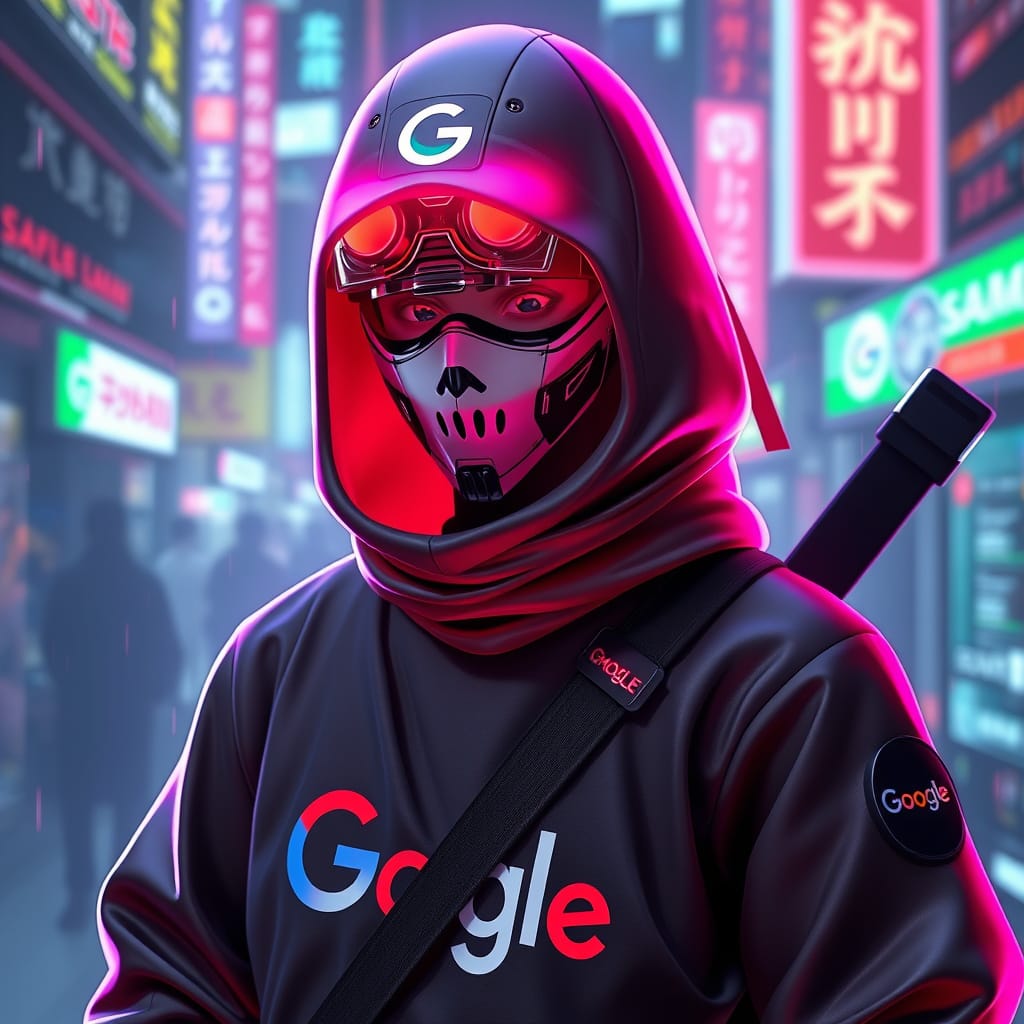Warning: This article may contain traces of truth. Consume at your own risk!
We have uncovered a conspiracy so vast, so meticulously engineered, that it makes the moon landing look like an impromptu TikTok. After months of infiltrating Google’s search division by posing as kombucha tap technicians (they never check credentials if you bring your own SCOBY), we’ve discovered the true purpose behind the new Google AI Mode. It’s not just a feature of Google’s search engine – it’s an extinction event for the rest of the internet disguised as a helpful Ai assistant. The evidence was hiding in plain sight, encoded in seemingly innocent phrases like “helping people discover content from the web” and “making it easy for people to explore”- corporate doublespeak that translates to “we’re building a roach motel for internet traffic where queries check in but never check out.”
The Great Website Extinction Event
For nearly 25 years, Google has operated on a simple premise: you search for something, Google shows you a list of relevant websites (or ten blue links), you click on one, and those websites show you ads or try to sell you things. This business model – essentially being a glorified internet traffic cop – has generated trillions in revenue and funded everything from self-driving cars to immortality research to whatever the hell Google Stadia was supposed to be.
But with Google AI Mode, Google has discovered something revolutionary: why send users to other websites when you can just keep them on Google forever? It’s like a nightclub owner realizing they could make more money if patrons never left to get food elsewhere, so they install a kitchen, a bedroom, and eventually just weld the doors shut while insisting it’s for everyone’s convenience.
Google AI Mode uses what Google euphemistically calls “query fan-out” – a process where their AI generates multiple searches simultaneously, aggregates information from various sources, and synthesizes an answer for you without requiring you to visit any actual websites. Google describes this as “helping people discover content from the web,” which is like saying mosquitoes help you discover blood donation.
The implications for publishers are apocalyptic. Workshop Digital’s early testing found that in Google AI Mode, “the AI-generated response takes center stage, pushing all other organic results out of the main scroll, aside from a small panel of featured articles off to the side.” Translation: websites are being relegated to the digital equivalent of the kids’ table at Thanksgiving dinner.
The Great Advertising Paradox
Google’s business model has always relied on advertising revenue – $237 billion in 2024 alone. So what happens when Google stops sending users to other websites? How do they maintain this revenue stream when their new AI Mode keeps everyone firmly within Google’s walled garden?
The answer is both brilliant and terrifying. Google has already confirmed to Adweek that they will “explore bringing ads into” Google AI Mode, which is corporate-speak for “we are definitely putting ads here; we’re just figuring out how to make you accept them.” Their plan is to leverage learnings from ads in AI Overviews, where sponsored content appears beneath AI-generated responses.
But here’s where it gets diabolical: these won’t be just any ads. They’ll be hyper-personalized, AI-selected products presented as helpful recommendations. Imagine asking, “What are the best running shoes for beginners?” and receiving a detailed response that somehow concludes the objectively best shoe is whatever brand paid Google the most. It’s like having a personal shopper who’s secretly on commission for everything they recommend.
The advertising paradox is complete: Google is destroying the ecosystem that supports websites through ad revenue, while simultaneously creating a new advertising ecosystem entirely under their control. It’s like burning down your neighbor’s farm to build a supermarket, then selling them their own vegetables at a markup.
The Rise of Local Search Hallucination Syndrome
One of the most alarming developments in Google AI Mode is what we are calling “Local Search Hallucination Syndrome.” Workshop Digital observed that Google AI Mode isn’t just returning general advice – it’s pulling in “contextual, regionally relevant answers.” In testing queries about gardening in Austin, Texas, “the results accounted for our hot summers and sudden winters, specific to my zip code.”
This sounds helpful until you realize what it means: Google’s AI Mode is now generating hyper-localized content that may or may not be accurate. Instead of linking to a local expert’s blog about Austin gardening, the AI is essentially pretending to be that local expert. It’s digital colonialism – AI appropriating the expertise of local content creators while cutting them out of the internet traffic loop.
The syndrome isn’t limited to gardening tips. Imagine Google AI Mode confidently telling you about the “best Nigerian cuisine restaurant in London” or the “top dermatologist in Belgravia” based not on actual reviews or expertise, but on what its training data and algorithms have synthesized. It’s like having a friend who’s never been to your city recommend restaurants there based solely on reading Yelp reviews from 2012.
The Multimodal Apocalypse
As if text-based AI domination wasn’t enough, Google has now added “multi-modal” capabilities to Google AI Mode. According to their blog post from April 7, 2025, users can “snap a photo or upload an image, ask a question about it and get a rich, comprehensive response with links to dive deeper.”
In their example, someone takes a photo of a bookshelf, and AI Mode identifies each book and provides recommendations for similar books. It’s an impressive technical feat that just happens to make platforms like Goodreads, LibraryThing, and independent bookstore websites increasingly irrelevant.
The multi-modal expansion represents phase two of Google’s internet extinction plan. Phase one was capturing text-based queries; phase two is capturing visual search. By the time they get to phase three – likely some kind of neural interface where you just think about shopping and Google automatically charges your credit card – there won’t be any independent websites left to protest.
The Curious Case of the Missing Business Model
The most telling aspect of Google’s AI Mode isn’t what they’re saying about it-it’s what they’re not saying. Nowhere in their announcements do they address the fundamental question: If Google stops sending traffic to websites, how will those websites continue to exist?
This is the digital equivalent of a city building a massive bypass highway around a small town and then wondering why all the local businesses died. The internet ecosystem has evolved around the premise that Google sends traffic to websites, websites monetize that traffic, and those websites continue creating the content that Google needs to fill its search results.
When Workshop Digital tested Google AI Mode, they found Google is “guiding users into AI Mode” with callouts at the bottom of many AI Overviews encouraging users to “dive deeper in AI Mode.” It’s a not-so-subtle nudge signaling that Google wants users to start shifting how they interact with search, creating a feedback loop: more AI Mode usage means less website traffic, which means fewer websites creating content, which means Google’s AI needs to generate more content itself, which means an internet increasingly dominated by Google-generated information.
The Elementary Truth: One Search Engine to Rule Them All
After months of investigation, the elementary truth becomes unavoidable: Google AI Mode isn’t just a feature – it’s an existential shift in how the internet works. The web is being transformed from a decentralized network of independent sites into a Google-mediated experience where they control what you see, what you buy, and what you believe.
The three smoking guns that expose this master plan:
First, the physical evidence: Google AI Mode literally pushes organic search results out of view, replacing them with Google-generated content that keeps users within Google’s ecosystem.
Second, the financial motive: Google has explicitly confirmed they’ll be bringing ads to Google AI Mode, ensuring they maintain revenue even as they reduce traffic to websites that traditionally displayed Google ads.
Third, the strategic pattern: From multi-modal search to local context awareness, every new AI Mode feature makes Google more indispensable while making independent websites more irrelevant.
So what’s the endgame? A world where “going online” effectively means “using Google,” where businesses can only reach customers by paying Google, and where information diversity diminishes as independent publishers can’t sustain themselves. It’s a return to the AOL walled garden of the 1990s, except instead of “You’ve Got Mail,” it’s “You’ve Got Whatever Google’s AI Decides You Should See.”
The final irony is that Google’s AI needs the very internet it’s helping to destroy. Without diverse, independent websites creating content, what will train the next generation of Google’s AI models? Perhaps that’s why they’re so carefully maintaining that “small panel of featured articles off to the side” in AI Mode – not for users, but as digital life support for the content ecosystem they still need to harvest.
What do you think? Is Google’s AI Mode the helpful assistant they claim, or the internet’s extinction event in disguise? Have you tried it and found yourself spending more time on Google and less time visiting actual websites? Share your experiences in the comments below-assuming, of course, that anyone still visits individual websites like this one.
If this article made you nervously glance at your website's traffic analytics while contemplating a future career as a Google advertising specialist, consider supporting our work with a triple-digit donation. Your contribution helps fund our ongoing investigation into Big Tech's world domination plans and ensures we can continue publishing these exposés until Google's AI eventually decides our content isn't worth surfacing to users anyway. Plus, we promise to use your money to stockpile server space for the coming internet apocalypse.






GIPHY App Key not set. Please check settings
4 Comments